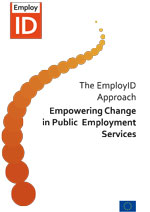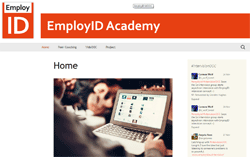European Public Employment Services (PES) and its employees are facing fundamental challenges to the delivery of efficient and effective services and need to change their strategies to combat rising unemployment and demographic change. The matching paradigm, which requires that individuals are matched to the best fit jobs, no longer has universal credibility. In periods of high unemployment, when job vacancies are few, this practice paradigm is of limited value. Customers/clients are frustrated that it is increasingly difficult to get a job from their PES and PES practitioners feel disempowered, because it is harder to get their customers/clients into a job. PES practitioners need new paradigms for practice, which conceptualise labour market information differently, for example, by making use of ‘Big Data’ (e.g. through use of visualisation tools for local, regional and national labour market information).
Career adaptability, defined as the ability to manage successful transitions in employment, training, education and other contexts, consistently across the life-course is increasingly seen as a key part of the solution to these challenges.
However, supporting the development of career adaptability in the customers/clients of PES requires PES practitioners (1) to enhance their own career adaptability and, linked to this, (2) to transform their own individual and collective professional identity. Such a transformational process is a complex and continuous learning process that needs a holistic, technology-enhanced approach to facilitation and support of PES providers and their staff.
Professional identity consists of many different elements that interrelate. First of all, professional identity has an individual and a collective dimension, and for individuals it is linked to other aspects of their personal identities, relating to other life roles. Identity encompasses work activities and work organisation, the relationship with other professions, and the professional culture as well as processes of becoming part of the profession.
Continue reading about EmployID Objectives, our Approach, or see our short and explanatory video Overview





